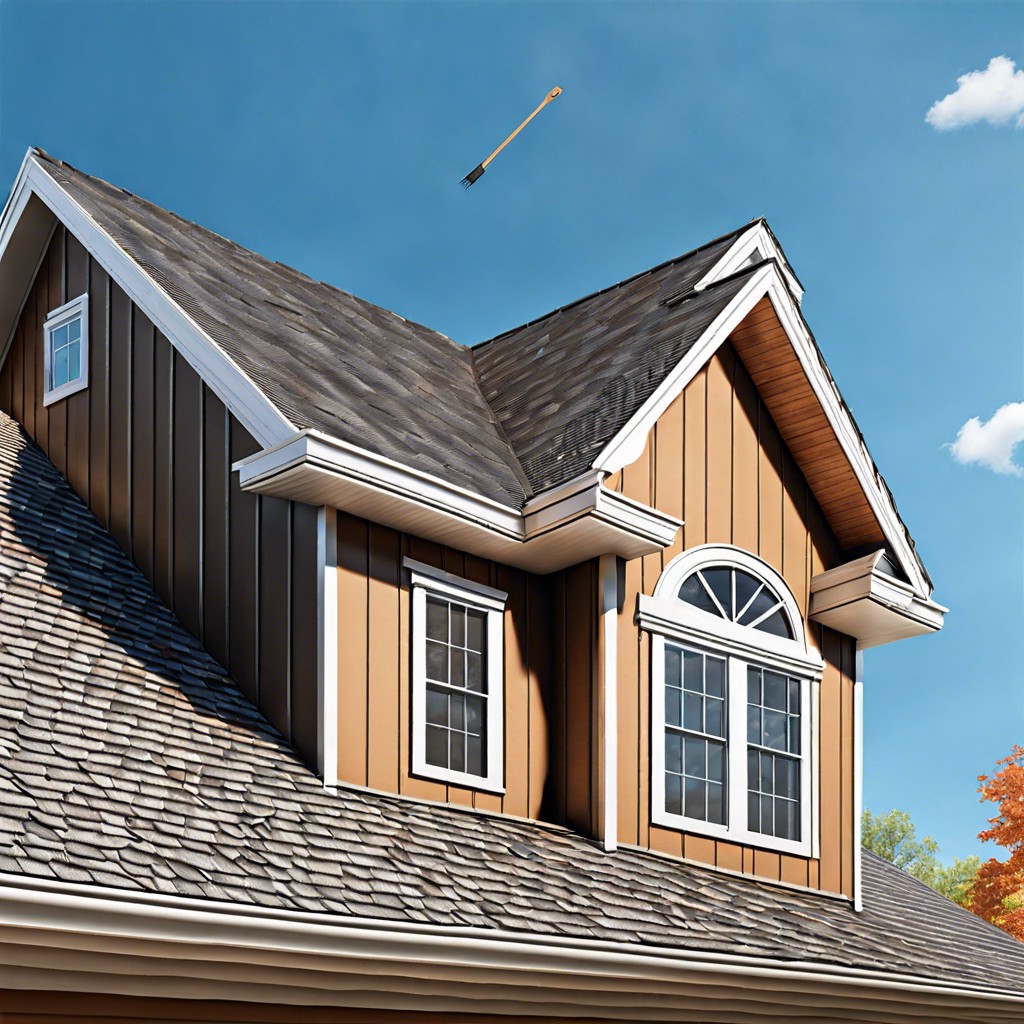Last updated on
This article walks you through the steps to build a durable and weather-resistant roof for your home.
Key takeaways:
- Local building codes are crucial for a successful roof plan.
- Consider climate, longevity, and cost when choosing materials.
- Framing is essential for structural support and stability.
- Building a gable roof requires precision and careful installation.
- Be mindful of weather conditions and prioritize safety during construction.
Planning Your Roof

Before hammer meets nail, having a clear plan is your blueprint for success. Start with local building codes; these are your North Star, guiding every aspect from slope to materials. Skipping this step could lead to a redo, a wallet’s worst nightmare.
Next, sketch a bird’s-eye view of the structure. Take into account any chimneys or skylights—these aren’t just fancy features; they’re like chess pieces that change the game of water flow and structural load.
Consider climate. Snowy areas call for steeper slopes—think of it as nature’s slide. For those living where the sun reigns supreme, a lighter colored roof might be the knight in shining armor against solar heat gain.
Finally, think about the longevity versus cost. It might feel like weighing a feather against a brick. High-end materials promise a longer lifespan but may have you dipping into the kids’ college funds, whereas more affordable options could mean more frequent repairs. It’s a balancing act fit for a tightrope walker.
Choosing a Style and Materials
Navigating the plethora of roofing materials and styles might resemble choosing a needle from a haystack. However, the right choice hinges on both aesthetics and the building’s geographical location. Asphalt shingles lead the pack in popularity due to their affordability and straightforward installation. Metal roofing is a step up, applauded for its longevity and energy efficiency, albeit with a higher initial cost.
Slate and tile offer old-world charm and exceptional durability but aren’t shy about their weight. This heavyweight factor means ensuring your structure can shoulder the load before setting your heart on these options. Wood shakes or shingles hit the sweet spot for those desiring a rustic look, yet they demand regular maintenance to prevent nature’s wear and tear.
Now, incline your thoughts toward the roof’s pitch – the angle or slope. It’s not just about the curb appeal; the pitch also serves a practical purpose. Steeper slopes shed water and snow like a duck’s back, impeccable for high precipitation areas, but flat roofs can suit arid climates and resonate with modern architectural vibes.
In short, marrying function and fashion when selecting materials and styles will make your roof not only a shelter but a statement.
Framing Your Roof
Framing is the skeleton that supports your roof’s coverings and insulation. To kick off, you’ll plot the roof’s outline with a chalk line for accuracy. Then, cut your rafters to fit the desired pitch and length; these are the diagonal beams holding up the roof.
Next, is the ridge board, essentially the spine of your roof, where rafters will connect at the top. Ensure this is both straight and level. The birdsmouth cut allows each rafter to perch securely on the top plates of the walls. Consistency is key here – identical cuts on rafters keep the roof symmetrical.
Horizontal beams called joists prevent your rafters from spreading under weight, acting as the stabilizing belt of the structure. Meanwhile, collar ties or rafter ties can be thrown into the mix to reinforce the frame against heavy winds.
Remember, local building codes dictate specifics like rafter size and spacing, so check in with those rules to stay on the right side of safety – and the law. With the frame solid and secure, your roof is shaping up to shield your home come rain or shine.
Building a Basic Gable Roof
Gable roofs are the classic pitched rooftops adorning many homes, shed simple rainwater and snow with grace, and shout “house” in the language of architecture. Here’s how to build one:
- Mark the Ridge Board: This piece is the rooftop’s spine, placed at the apex of the roof. Ensure it’s level; your roof’s symmetry depends on it.
- Cut Rafters: These are the bones. Their angled cuts meet the ridge board at the top and the wall plate at the bottom, forming the slope. Precision is key – an error here is like a misstep in a tango!
- Raise the Rafters: Hoist them up and nail them in pairs across from each other on the ridge board. It’s a balancing act like walking a tightrope; you need support on both sides to keep it steady.
- Install Collar Ties: Think of these as the safety net, preventing the rafters from splaying under weight. They also double as handy storage space for lightweight items.
- Nail the Sheathing: This is your roof’s skin, flat panels that cloak the rafters, providing a base for shingles or other materials.
Remember, building a roof is a symphony of angles and precision. Each step done correctly leads to a crescendo of satisfaction as you nail down that last shingle.
Expert Q&A
Having tackled the nuts and bolts of roof construction, from choosing materials to the intricacies of framing, you may still have burning questions. That’s where diving into the nitty-gritty with some expert insights can be incredibly beneficial. Here are a few queries that often crop up, with answers to shine a light on those lingering grey areas:
- Q: How can weather conditions affect my roofing project?
- A: Be on guard for Mother Nature’s whims. Sub-zero temperatures can make shingles brittle, and high winds might turn loose materials into dangerous projectiles. Always check the forecast and plan for a stretch of clear, calm weather.
- Q: What safety measures should I take during roof construction?
- A: Safety first! Make certain all workers sport sturdy boots with slip-resistant soles, use safety harnesses when working on steep grades, and keep the worksite tidy to minimize tripping hazards. Remember, a moment of caution can prevent a lifetime of regret.
- Q: Can I reuse old roofing materials?
- A: While recycling is commendable, this is one area where fresh is best. Used materials may have unseen damage or wear that could compromise your new roof’s integrity. It’s wise to start with new materials that come with a warranty for peace of mind.
- Q: How do I know if my roof needs ventilation?
- A: Ventilation is key for preventing a host of issues, such as ice dams and mold. If your attic space gets hotter than a summer BBQ or you spot condensation worthy of a rainforest, it’s time to look into proper roof and attic ventilation systems.





